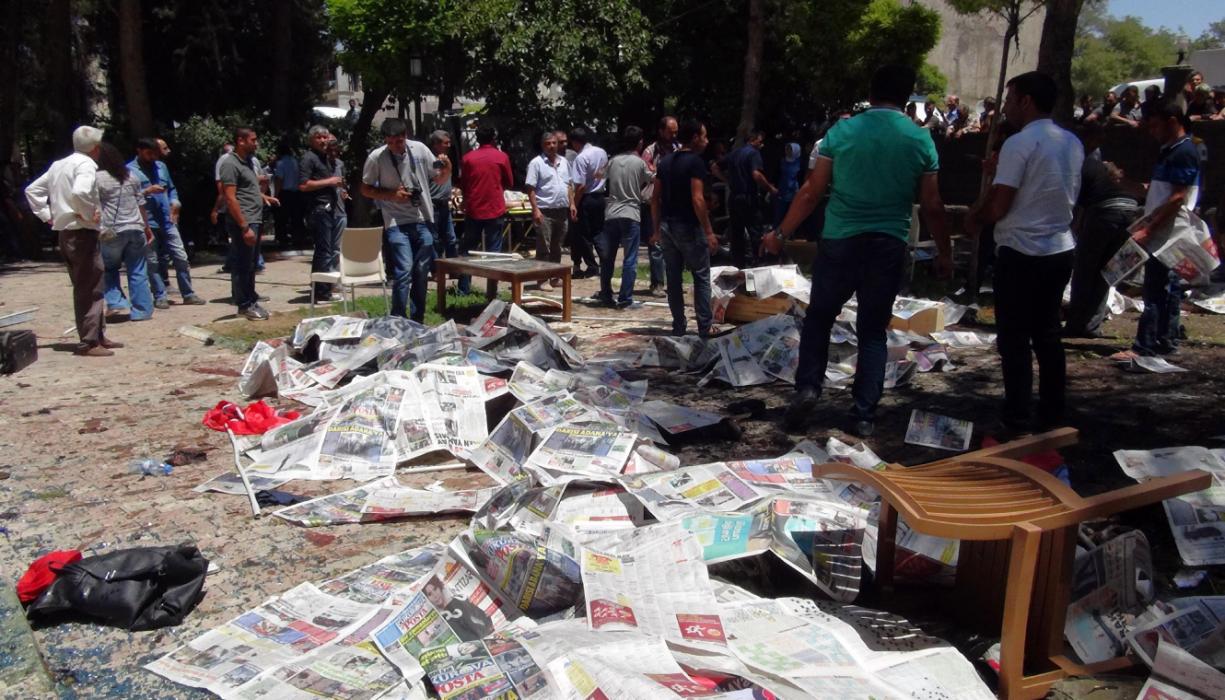Investigators identify the perpetrator in the Suruç Massacre as Şeyh Abdurrahman Alagöz, a youth who allegedly received weapons training in ISIL-held Syria earlier this year, amid indications that the attack is linked to a deadly bombing against the HDP last month

Investigators identify the perpetrator in the Suruç Massacre as Şeyh Abdurrahman Alagöz, a youth who allegedly received weapons training in ISIL-held Syria earlier this year, amid indications that the attack is linked to a deadly bombing against the HDP last month
The perpetrator of the July 20 suicide attack on a socialist youth group in southeastern Turkey has been identified as Şeyh Abdurrahman Alagöz amid speculation about the 20-year-old’s possible connections to Orhan Gönder, a member of the Islamic State of Iraq and the Levant (ISIL) that is accused of bombing a political rally in Diyarbakır on June 5.
Speculation began to center on Alagöz, who hails from the eastern province of Adıyaman, after investigators encountered the completely destroyed remains of a male, as well as the man’s ID card, at the site of the attack, the Amara Cultural Center in Suruç. DNA tests in Diyarbakır and Ankara confirmed that Alagöz was the perpetrator of the attack.
According to allegations, Alagöz’s brother, Yunus Emre Alagöz, left Adıyaman in January 2014 to join ISIL in Syria, while the Suruç perpetrator is also believed to have joined ISIL at the same time as Gönder, who detonated a bomb at a Peoples’ Democratic Party (HDP) rally in Diyarbakır right before the June 7 general elections, killing four people.
Turkish officials, however, said they believe the two brothers crossed into Syria via Gaziantep and Kilis in January 2015 and were trained on bombs by ISIL for three months, before returning to Turkey by illegal means in May 2015.
Police are now seeking to find Yunus Emre Alagöz, who is thought to be preparing for another attack.
In both the Diyarbakır and Suruç attacks, the perpetrators used iron balls that were strengthened with TNT explosives. In the Diyarbakır attack, the bomb was detonated by telephone, while the Suruç assault was conducted with a similar device on the body of Abdurrahman Alagöz.

People look at smoke from an explosion which injured several people during a rally by the HDP on June 5, 2015 in Diyarbakir, two days ahead of legislative polls. İlyan Akengin/AFP/Getty Images
Police are still pursuing the theory that there was a second, female suicide bomber at the site, but DNA tests have yet to confirm the allegation.
The father of the perpetrator, Zeynel Abidin Alagöz, said the two sons left home about six months ago.
“[Abdurrahman] was just a boy – he would never hurt an ant. How did this happen? We haven’t been able to figure out who brainwashed him,” he said. “I don’t believe my son would do something like this.”
The two brothers were sought for eight months as “missing people linked to terror.”
The young man’s mother, Semüre Alagöz, said her son had returned only 10 days ago, before she lost contact with him.
“They didn’t tell us where they went or what kind of job they had found. I don’t know whether he joined ISIL. He was a good boy,” the woman said.
In 2013, Yunus Emre Alagöz told his family that he had enrolled at Ağrı İbrahim Çeçen University and left Adıyaman. His family, however, received no news from him for months until he abruptly called them to say he was in Saudi Arabia. In 2014, he returned to Adıyaman and took some money from his family to open a teahouse.
The teahouse soon began to function as a meeting place and prayer room for radical Islamists in Adıyaman.
The tea house, called “İslam,” was closed down eight months ago by Adıyaman Municipality because it lacked a license. Shop owners in the same streets said the people that patronized the tea house did not pray at the neighborhood mosque.
“They were reciting the adhan [call to prayer] on Friday and were praying in the upper floor inside the teahouse,” said one of the shop owners on the street.
On July 2014, a man believed to be Yunus Emre Alagöz applied to rent the building as an internet café but opened a teahouse instead. In time, many people, both young and old, started to come to the premises, with around 50 people gathering on Fridays for prayer and preaching.
Sendika.Org, Hürriyet Daily News